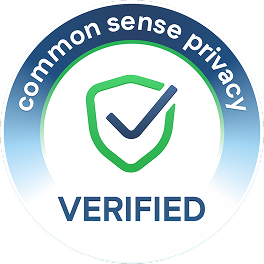Take a look inside 7 images
Knewton
Pros: Attractive and easy to use, with adaptive technology and growing content.
Cons: Limited content for now, and limited ways to demonstrate knowledge.
Bottom Line: Useful adaptive-learning site is limited in scope and sequence but should improve with time.
Teachers can use this site to incorporate adaptive lessons into their curriculum. They can set up courses for specific students or for the whole class, choosing which lessons to include. Teachers can search for content by grade level or topic. They can also create their own instructional or assessment content. By setting specific due dates and being able to monitor students' progress in the teacher dashboard area, teachers can help their students stay on track. Students 13 and over can register on their own (though anyone under 18 needs a parent's permission), but for students under 13, teachers can make child accounts for them, under their own accounts, to assign courses and lessons for their class.
The site currently offers math lessons for grades 6-12, English language arts lessons for grades 4-6, and biology lessons for grades 9-11. The site's goal is to eventually have lessons that span K-12 content in several areas, but they aren't there yet. The information they have so far, though, is high-quality and helpful.
Knewton is an adaptive-learning website with a powerful engine that can figure out what students know and how they best learn. The site suggests assignments that students can start on their own, or assignments can be added to a lesson or course. The lessons themselves are then tailored to each student's personal needs, with the site providing different content, a different level of difficulty, and a different media format based on the student's performance on the assessments. The site's technology uses freely available materials, such as YouTube videos and old state tests, calibrates the materials to the system, and assembles the information into a lesson customized for an individual student. Users can sign up as a teacher, parent, or student, though students need to be at least 13 to have their own accounts. For use on a computer, laptop, mobile device, or tablet, the display helpfully adjusts for different screen sizes.
There are three main sections of the website: "Teach," "Learn," and "Create." Under "Teach," teachers or parents can create their own courses and either take them themselves or assign them to a person or group of people. Teachers can add assignments to each course. The assignments, by default, can last from a day to a couple of weeks, but they also have customizable due dates. Teachers and parents can also set specific learning goals for students and track student progress. Under "Learn," anyone can take a course or just work on a single assignment or multiple ones. This is the area where students will spend the most time. Everything is auto-saved, so there's no danger of losing work or progress. "Create" is for anyone who wants to make her own instructional or assessment materials on just about any subject. Currently the site only covers certain areas of science, math, and ELA for certain grade levels, but its developers are continuing to add more material.
Knewton is a very good option for a certain kind of learning. If students need adaptive lessons that will help them learn in a customized way, or if teachers want a quick and easy-to-use solution for filling in some of their curriculum, the site is a very good fit. It's a less-good fit if a teacher's needs involve original creation or hands-on activities. When a student starts an assignment, the right side of the screen shows progress in that assignment and how much time is left before the due date. It also has a timer that counts up, measuring how much time is spent in the lesson. This timer doesn't affect the adaptive lessons, but it can introduce an element of pressure for some students -- which could be good or bad, depending on the student's needs.
Since the assessments are built into the assignments, teachers and parents can put together self-contained courses for their students and kids. For any given course, Knewton creates an individualized learning experience for each student. It figures out what students' strengths are and what their current knowledge is, and then it recommends assessments and instructional content to help each student reach their goals. It also adjusts questions asked and material presented accordingly. Students can also monitor their own progress on each assignment screen to make sure they will reach their educational goals and due dates. Though the adaptive capabilities of this site make it very good for learning, it will be a much more useful resource when its developers complete their goal of offering K-12 material across more subjects. It's also difficult to make sure specific information gets covered; better ways to target particular content would be a welcome addition.

















